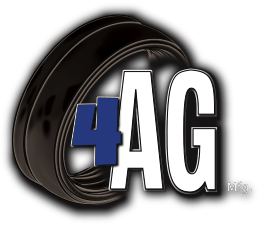The Basic of Cultivators You Need to Know
The basic idea of weed control soil scratching is ancient and has been done with mattocks or hoes for decades before cultivators were developed. Originally, cultivators had been drawn or pushed or drawn by people through draught animals (for example horses, mule, or oxen). That brings the advantages of the manual and industrial cultivator in the agricultural sector to what that equipment is.
Cultivator- Definition
Cultivator, is one such equipment that penetrate the soil as they are trapped linearly by the tillage (also called shanks). Another definition refers to machines using discs or tillage rotary movement to achieve similar results. A major example is the rotary tiller.
Cultivators mix and sweat the earth either prior to planting or after the crop starts growing in order to kill weeds – controlled commotion of the topsoil near to the crop plants kill the weeds around them, tearing their leaves and interfering with their photosynthesis). In contrast to a harrow that disturbs the whole soil surface, cultivators are created to crack the soil, sparking plants, but disrupting weeds. Cultivator gauge wheel makes the work smoother and faster.
Manual cultivator benefits and disadvantages:
First, farming is hard physical work, hence the undisputed advantage of cultivator gauge wheel is to reduce efforts in tillage and seeds. These garden tools can also differentiate between advantages:
Ease of use: rest against both the surface and push in the correct direction is the only operational principle;
No maintenance needed (lubrication or replenishment);
The careful cutting of weeds: as self-propelling counterparts, hand cultivators do not separate them among rows;
processing of sensitive and difficult areas (bodens, greenhouses, alpine hills, areas between trees and bushes);
Price accessibility.
Naturally, there are limitations to the above instruments:
The need to replace discs in the manual rotary growers, in front of a modern, independently propelled counterparts;
Low productivity - appropriate only for small, limited area tasks;
The physical strength needs to be used;
Low virgin soil efficiency and soil solidity.
Now that we understand about manual cultivators, we can see the advantages of industrial equipment in the farming sector.
Benefits of industrial cultivators
To the degree that growing is commercially carried out today (e.g. in lorry farming), tractors, in particular crop row tractors, generate this power. Industrial farmers may vary widely between 10 ft (3 m) and 80 ft (24 m) in size and shape. Many have hydraulic wings that pleat up to facilitate and make road travel more secure. Various types are used to pre-plant and control the weeds among the row crops for the preparation of fields.
The cultivator may be an instrument which is mounted on the three point trailer or mounted on a frame below the tractor, following the tractor via an attic bar. Active farming equipment is driven by a power-starting shaft. Although most farmers are seen as a secondary workflow, active farmers are often used in lighter soils rather than ploughing for primary workflow. There are about 6 m (20 ft) in the largest version possible and a tractor of more than 150 hp (110 kW) (PTO) is needed.
The soil is fertilized and manipulated for the growth of plants and crops using cultivators and inter-cultivators. Cultivators are very cost-effective and complete ploughing in a small footprint. In contrast to manual cultivation, time spent on soil preparation and post-collection preparation significantly reduces. The use of tractors in small-scale or large-scale farming reduces resources and money spent on each unit of land. Increased use of farmers for different agriculture purposes has resulted in small-scale economic farms making more use of their land and helping farmers to prosper overall.
Get a high quality cultivator gauge wheel from 4AG Manufacturing in OKC. Visit our office to learn about it in details.

